In this series of articles, we’ll shine a spotlight on some of the world’s best underwater photographers. Today we highlight Shane Gross.
Tell us a little about yourself.
I began diving in 2000 at the age of 15 and took up photography seriously in 2009. I’m originally from Canada and currently based in The Bahamas. I try to focus on local conservation issues, both the positive and negative ones. I work with scientists and conservation organizations to help give them the visual tools they need to tell their story and the story of the animals and environments they are working to help.
How long have you been an underwater photographer?
I started out with disposable film cameras snorkeling as a small child, but in 2009 I decided I wanted to try to take photos as great as the people I admired like Doug Perrine and David Doubilet. So, I took out a car loan and bought a camera setup that gave me some control over the final image. My obsession grew as I saw more and more important stories needing to be told.

Shot with: Nikon D500, Aquatica housing and Mini Dome, Tokina 10-17mm fisheye lens and twin Sea&Sea YS250 strobes

Shot with: Nikon D90, Aquatica housing and Mini Dome, Tokina 10-17mm fisheye lens and twin Sea&Sea YS250 strobes

Shot with: Nikon D500, Aquatica housing and Mini Dome, Tokina 10-17mm fisheye lens and twin Sea&Sea YS250 strobes

Shot with: Nikon D500, Aquatica housing and Nikkor 60mm macro lens, and a Sea&Sea YS250 strobe on a gorilla pod and triggerfish remote sensor

Shot with: Nikon D90, Aquatica housing and Mini Dome, Tokina 10-17mm fisheye lens and twin Sea&Sea YS250 strobes, Retra remote trigger

What got you interested in underwater photography?
As a child my father would come home from amazing adventures in the Red Sea or Papua New Guinea and project his slides onto our curtains. Pictures of sharks, turtles and Spanish dancers are still seared into my memory, so my interest was always there. One day, while backpacking through Australia, I was flipping through a magazine at a rest stop when Doug Perrine’s famous sardine run picture made my jaw hit the floor. In that moment I decided to become an underwater photographer.
What’s your favorite style of underwater photography?
Wide-angle tends to tell more of the story so I spend most of my time shooting wide. But I enjoy macro just as much.
Any favorite subjects?
Sharks are my first love, but I get excited to shoot anything new.
Any favorite destinations?
I’ve lived in The Bahamas for seven years now and still love it, but I can’t wait for the day I get to visit the Galapagos, South Africa or Antarctica. There are a lot of amazing places I haven’t been.
What’s your underwater setup?
Nikon D500, Aquatica Housing and Sea&Sea YS-250 strobes
Do you have any tips you can share with new underwater photographers?
Become a fan and be patient. Spend some time researching other photographers. Build your mental library. No one wants to see the same shot, from the same location, over and over. Buy all the books out there by David Doubilet, Brian Skerry, Alex Mustard, Paul Nicklen, Thomas Peschak or whoever’s work inspires you. Then think about what you can bring to the conversation. It’s intimidating, but there are endless stories to tell about the ocean, especially today as we are changing everything and mostly for the worse.
By guest author Shane Gross
For more of Shane Gross’ work, please visit his website here and Instagram here.


